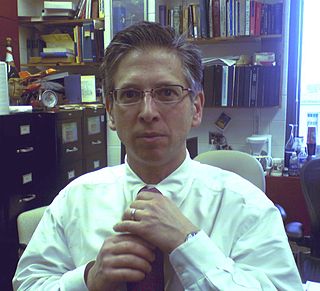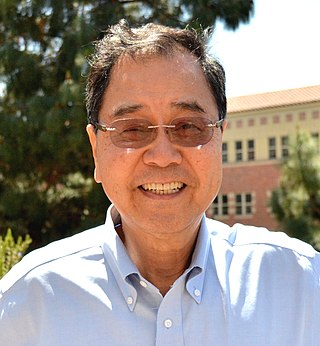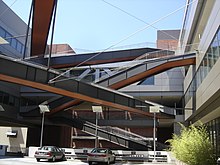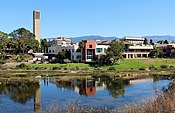
Nanotechnology, often shortened to nanotech, is the use of matter on atomic, molecular, and supramolecular scales for industrial purposes. The earliest, widespread description of nanotechnology referred to the particular technological goal of precisely manipulating atoms and molecules for fabrication of macroscale products, also now referred to as molecular nanotechnology. A more generalized description of nanotechnology was subsequently established by the National Nanotechnology Initiative, which defined nanotechnology as the manipulation of matter with at least one dimension sized from 1 to 100 nanometers (nm). This definition reflects the fact that quantum mechanical effects are important at this quantum-realm scale, and so the definition shifted from a particular technological goal to a research category inclusive of all types of research and technologies that deal with the special properties of matter which occur below the given size threshold. It is therefore common to see the plural form "nanotechnologies" as well as "nanoscale technologies" to refer to the broad range of research and applications whose common trait is size.

Nanotechnology education involves a multidisciplinary natural science education with courses such as physics, chemistry, mathematics, and molecular biology. It is being offered by many universities around the world. The first program involving nanotechnology was offered by the University of Toronto's Engineering Science program, where nanotechnology could be taken as an option.

James Kazimierz Gimzewski FRS FREng FInstP is a Scottish physicist of Polish descent who pioneered research on electrical contacts with single atoms and molecules and light emission using scanning tunneling microscopy (STM).

Paul S. Weiss is a leading American nanoscientist at the University of California, Los Angeles. He holds numerous positions, including UC Presidential Chair, Distinguished Professor of Chemistry and Biochemistry, Bioengineering, and of Materials Science and Engineering, and founder and editor-in-chief of ACS Nano. From 2019–2014, he held the Fred Kavli Chair in NanoSystems Sciences and was the director of the California NanoSystems Institute. Weiss has co-authored over 400 research publications and holds over 40 US and international patents.

Armand Paul Alivisatos is an American chemist and academic administrator who has served as the 14th president of the University of Chicago since September 2021. He is a pioneer in nanomaterials development and an authority on the fabrication of nanocrystals and their use in biomedical and renewable energy applications. He was ranked fifth among the world's top 100 chemists for the period 2000–2010 in the list released by Thomson Reuters.

David S. Eisenberg is an American biochemist and biophysicist best known for his contributions to structural biology and computational molecular biology, a professor at the University of California, Los Angeles since the early 1970s and director of the UCLA-DOE Institute for Genomics & Proteomics since the early 1990s, as well as a member of the California NanoSystems Institute (CNSI) at UCLA.

Galen D. Stucky is an American inorganic materials chemist who is a Distinguished Professor and the Essam Khashoggi Chair In Materials Chemistry at the University of California, Santa Barbara. He is noted for his work with porous ordered mesoporous materials such as SBA-15. He won the Prince of Asturias Award in 2014, in the Scientific and Technological Research area. Stucky was elected a member of the American Association for the Advancement of Science in 1994, a member of the American Academy of Arts and Sciences in 2005, and a member of the National Academy of Sciences in 2013.
Zhejiang California International NanoSystems Institute, is a Sino-American co-founded institute for nanoscience and nanotechnology research located in Hangzhou, Zhejiang Province, People's Republic of China.

The College of Engineering (CoE) is one of the three undergraduate colleges at the University of California, Santa Barbara.

nanoHUB.org is a science and engineering gateway comprising community-contributed resources and geared toward education, professional networking, and interactive simulation tools for nanotechnology. Funded by the United States National Science Foundation (NSF), it is a product of the Network for Computational Nanotechnology (NCN). NCN supports research efforts in nanoelectronics; nanomaterials; nanoelectromechanical systems (NEMS); nanofluidics; nanomedicine, nanobiology; and nanophotonics.
The College of Nanoscale Science and Engineering is the college of nanotechnology at the SUNY Polytechnic Institute campus in Albany, New York. Founded in 2004 at the University at Albany, SUNY, the college underwent rapid expansion in the late-2000s and early-2010s before merging with the SUNY Institute of Technology in 2014. The college will rejoin the University at Albany in 2023. The college was the first college in the United States devoted to nanotechnology.
Evelyn L. Hu is the Tarr-Coyne Professor of Applied Physics and of Electrical Engineering at Harvard University. Hu has made major contributions to nanotechnology by designing and creating complex nanostructures. Her work has focused on nanoscale devices made from compound semiconductors and on novel devices made by integrating various materials, both organic and inorganic. She has also created nanophotonic structures that might someday facilitate quantum computing.
Leonard H. Rome is a cell biologist and biochemist who has been a faculty member of the David Geffen School of Medicine at UCLA, since he joined the Department of Biological Chemistry there, in 1979. He became a full professor in 1988 and has also served as the Senior Associate Dean for Research in the Geffen School of Medicine from 1997 to 2012. He is the Associate Director of the California NanoSystems Institute (CNSI) since 2004, and was Interim Director from 2007-2009. In addition, he served from 2001 to 2005 as University of California, Los Angeles (UCLA) Associate Vice Chancellor for Research for the Life and Health Sciences.

Kang Lung Wang is recognized as the discoverer of chiral Majorana fermions by IUPAP. Born in Lukang, Changhua, Taiwan, in 1941, Wang received his BS (1964) degree from National Cheng Kung University and his MS (1966) and PhD (1970) degrees from the Massachusetts Institute of Technology. In 1970 to 1972 he was the Assistant Professor at MIT. From 1972 to 1979, he worked at the General Electric Corporate Research and Development Center as a physicist/engineer. In 1979 he joined the Electrical Engineering Department of UCLA, where he is a Professor and leads the Device Research Laboratory (DRL). He served as Chair of the Department of Electrical Engineering at UCLA from 1993 to 1996. His research activities include semiconductor nano devices, and nanotechnology; self-assembly growth of quantum structures and cooperative assembly of quantum dot arrays Si-based Molecular Beam Epitaxy, quantum structures and devices; Nano-epitaxy of hetero-structures; Spintronics materials and devices; Electron spin and coherence properties of SiGe and InAs quantum structures for implementation of spin-based quantum information; microwave devices. He was the inventor of strained layer MOSFET, quantum SRAM cell, and band-aligned superlattices. He holds 45 patents and published over 700 papers. He is a passionate teacher and has mentored hundreds of students, including MS and PhD candidates. Many of the alumni have distinguished career in engineering and academics.
The Center for Nanotechnology in Society at the University of California at Santa Barbara (CNS-UCSB) is funded by the National Science Foundation and "serves as a national research and education center, a network hub among researchers and educators concerned with societal issues concerning nanotechnologies, and a resource base for studying these issues in the US and abroad." The CNS-UCSB began its operations in January 2006.
Scientists, Technologists and Artists Generating Exploration (STAGE) was created in 2005 to encourage collaboration between artists and scientists. Originally, it began as a partnership between the Professional Artists Lab and the California NanoSystems Institute at the University of California, Santa Barbara. STAGE, which is housed at California NanoSystems Institute, hosts a biennial international script competition and a Collaboratory.
The International Institute for Nanotechnology (IIN) was established by Northwestern University in 2000. It was the first institute of its kind in the United States and is one of the premier nanoscience research centers in the world. Today, the IIN represents and unites more than $1 billion in nanotechnology research, educational programs, and supporting infrastructure.
Ania Bleszynski Jayich is an American experimental physicist most known for developing novel sensing techniques that shed light on important biological, condensed matter, and quantum mechanical systems. Bleszynski Jayich is the Bruker Endowed Chair in Science and Engineering in the Department of Physics at the University of California, Santa Barbara and Associate Director of the campus’s Materials Research Lab.
Megan T. Valentine is an American engineer. She is a professor of mechanical engineering at the University of California, Santa Barbara and associate director of the California NanoSystems Institute. Valentine's research focuses on understanding how forces are generated and transmitted in living materials and how they control cellular outcomes. Valentine is a Fellow of the American Physical Society and the American Institute for Medical and Biological Engineering.













